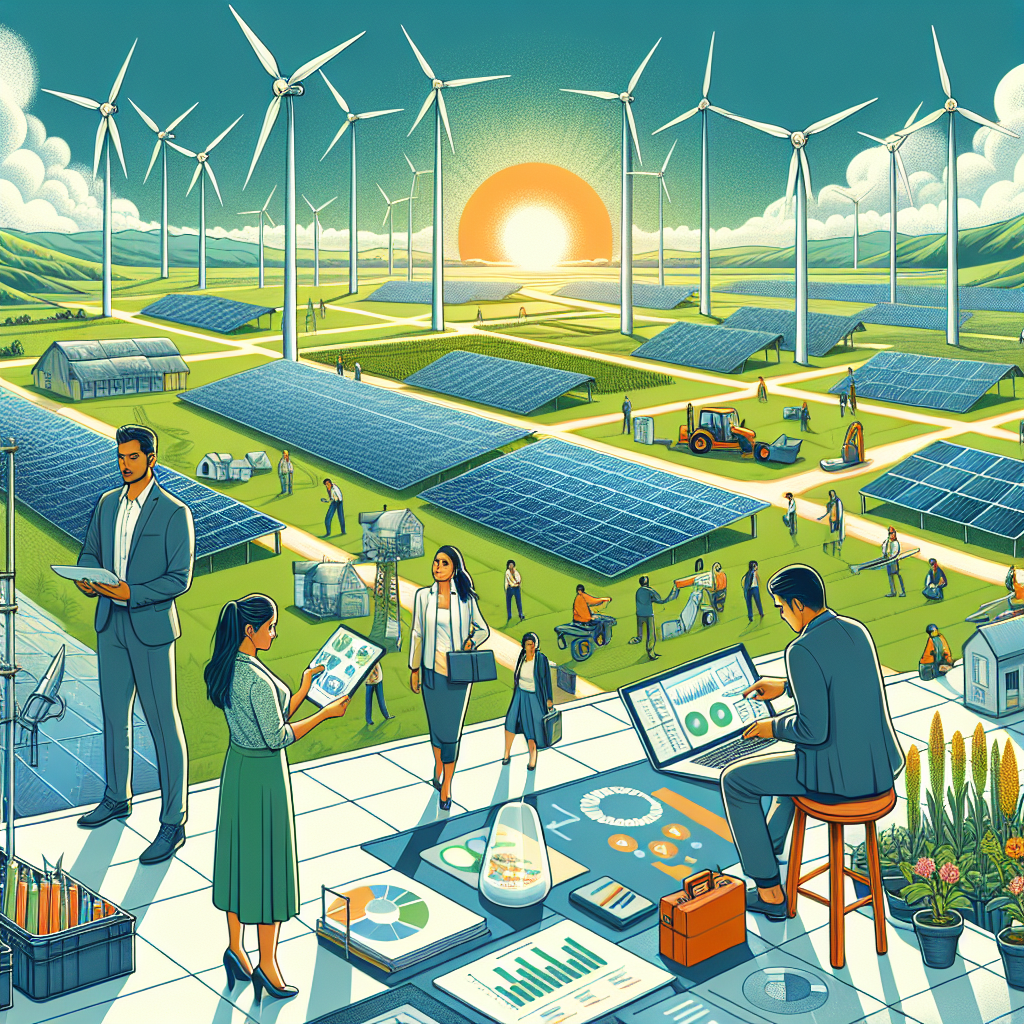The Impact of Renewable Energy Policies on Local Economies
The push for renewable energy adoption has grown exponentially in recent years, particularly as concerns over climate change and energy security have taken center stage. In 2025, the impact of renewable energy policies on local economies is becoming increasingly evident as communities embrace sustainable practices. This article delves into the various dimensions—including job creation, economic growth, local investment, and infrastructural transformation—that delineate the significant effects renewable energy policies have on local economies.
The Economic Benefits of Renewable Energy Policies
One of the most immediate and tangible impacts of renewable energy policies at the local level is the creation of jobs. As the demand for renewable technologies, such as solar panels and wind turbines, increases, local governments and private entities invest heavily in workforce development initiatives. Programs are implemented to train residents in the skills needed to install and maintain renewable energy systems. By 2025, it’s estimated that the renewable energy sector will have created millions of jobs globally, offering opportunities not just for engineers and technicians but also for those from varying educational backgrounds. This diversification of job availability has numerous ripple effects, including decreased unemployment rates and enhanced local spending capabilities.
Moreover, renewable energy policies foster economic growth in local communities through the establishment of green businesses and startups. As policies incentivize clean technology investments, local entrepreneurs are motivated to launch businesses focusing on sustainability. These enterprises often thrive in a supportive local ecosystem enriched by government grants, tax incentives, and favorable regulations. Such actions create a robust system where economic activity flourishes, with businesses attracting further investments and consumers, generating a multiplier effect that boosts the local economy.
Local Investment and Infrastructure Development
Renewable energy policies catalyze substantial local investments, which significantly enhance infrastructure development. In 2025, cities and towns are witnessing an influx of state and federal funding allocated to upgrade electricity grids to accommodate renewable sources like solar, wind, and bioenergy. Enhanced grid infrastructure means improved energy resilience for local communities, which becomes increasingly critical as climate-related disruptions become more commonplace. In turn, this revitalization of energy infrastructure aids in attracting new businesses and residents seeking reliable energy supplies.
Investment also extends to ancillary sectors such as electric vehicle charging stations, energy storage facilities, and green public transportation systems. These innovations not only create jobs but also contribute to a community’s overall sustainability goals, making it an attractive destination for businesses looking for clean, reliable electric options. Additionally, cities adopting ambitious renewable energy targets often report improvements in public health outcomes, further solidifying the advantages associated with sustainable local policy frameworks.
Enhancing Community Resilience through Renewable Energy Policies
In 2025, communities increasingly recognize the role of renewable energy in enhancing local resilience against climate change. As natural disasters become more frequent and severe, the dependence on traditional fossil fuels poses a significant risk to energy stability. Embracing renewable energy sources through engaged policy-making gives communities the tools they need to build a more robust energy supply system that can withstand shocks. These mitigation strategies not only reduce vulnerability to natural disasters but also help stabilize local economies during crises.
Moreover, local policies promoting renewable energy foster community engagement and empowerment. By involving residents in decision-making processes regarding energy policies, local governments create a sense of ownership and responsibility. This participatory approach often leads to innovative local solutions, invigorating wider community action surrounding sustainability. Local projects involving solar gardens or wind co-operatives enable residents to generate their own energy, reducing reliance on external energy providers while improving local self-sufficiency.
Renewable energy policies also serve as educational opportunities for communities. Schools and local organizations increasingly integrate the topic of renewable energy into their curricula, fostering environmental stewardship from an early age. As young adults enter the workforce with a strong understanding of sustainability, the local economy reaps the benefits of a knowledgeable and passionate workforce committed to driving innovation and progress.
Social Equity and Renewable Energy Policies
A vital aspect of renewable energy policies in 2025 is their potential to address social equity. Green energy initiatives often include provisions aimed at ensuring underserved communities benefit from these transitions. Policymakers are increasingly aware that without intentional efforts, renewable energy transformations could widen existing socioeconomic divides. By actively promoting participation from historically marginalized groups in both decision-making processes and job creation, local economies can foster inclusivity while driving sustainable growth.
Furthermore, policies centered on renewable energy can act as a powerful tool for reducing energy poverty. Many low-income families are disproportionately affected by high energy costs, which strain their budgets. Through incentives like subsidized solar panel installations and community solar projects, local governments can provide equitable access to renewable resources. As these families gain access to clean energy solutions, they experience reduced energy bills, freeing up funds for essential needs and additional spending in local businesses.
The intersection of social equity and renewable energy policies also stimulates community pride and cohesion. As residents witness tangible changes in their neighborhoods—such as increased green spaces, job opportunities in sustainable industries, and involvement in community-based renewable projects—local pride grows. This enhanced community identity not only boosts morale but also attracts new residents and travelers, further invigorating local economic conditions.
The Future of Local Economies with Renewable Energy Policies
As we move further into 2025, the relationship between renewable energy policies and local economies is poised to deepen. The ongoing advancements in technology and the growing combination of public and private sector partnerships hold the promise of transformative shifts in local economies. Increased efficiency in renewable energy production combined with cost reductions will gradually yield more economic benefits for local communities.
Moreover, as more local economies adopt renewable energy practices, they become leaders in climate action and innovation. Cities showcasing successful renewable energy transitions can serve as models for other regions, influencing national policies and creating networks that foster collaborative efforts. These solidified relationships hold the potential for crafting a more sustainable future, where local economies thrive on renewable energy initiatives, ultimately leading to significant global impacts on climate goals.
The need for a sustainable energy transition is urgent; every increment of progress matters. Local governments empowering their communities through renewable energy policies play a fundamental role in crafting resilient, prosperous economies. In this interconnected world, the success of local economies hinges on their commitment to a sustainable future.
Conclusion
In summary, the impact of renewable energy policies on local economies in 2025 is profound and multifaceted. From job creation and economic stimulation to enhancing community resilience and addressing social equity, these policies are crucial in transforming local economies. Encouraging investment in infrastructure and technology fosters sustainable growth while promoting community involvement and educational initiatives. As local governments and businesses continue to prioritize renewable energy solutions, the promise of a sustainable future becomes increasingly attainable, ultimately shaping the trajectory of our economies, communities, and environment.
FAQs
What kind of jobs are created through renewable energy policies?
The renewable energy sector creates various jobs, including roles in engineering, manufacturing, installation, and maintenance of renewable technologies such as solar panels and wind turbines. It also generates employment in ancillary services like project management, sales, and marketing.
How do renewable energy policies affect local investment?
Renewable energy policies enhance local investment by attracting funding for infrastructure development, green businesses, and community projects. This investment stimulates economic growth and establishes a sustainable energy framework essential for community resilience.
Are renewable energy policies beneficial for low-income communities?
Yes, renewable energy policies can significantly benefit low-income communities by reducing energy costs, providing job training and employment opportunities, and facilitating access to clean energy solutions, ultimately alleviating energy poverty and promoting social equity.












